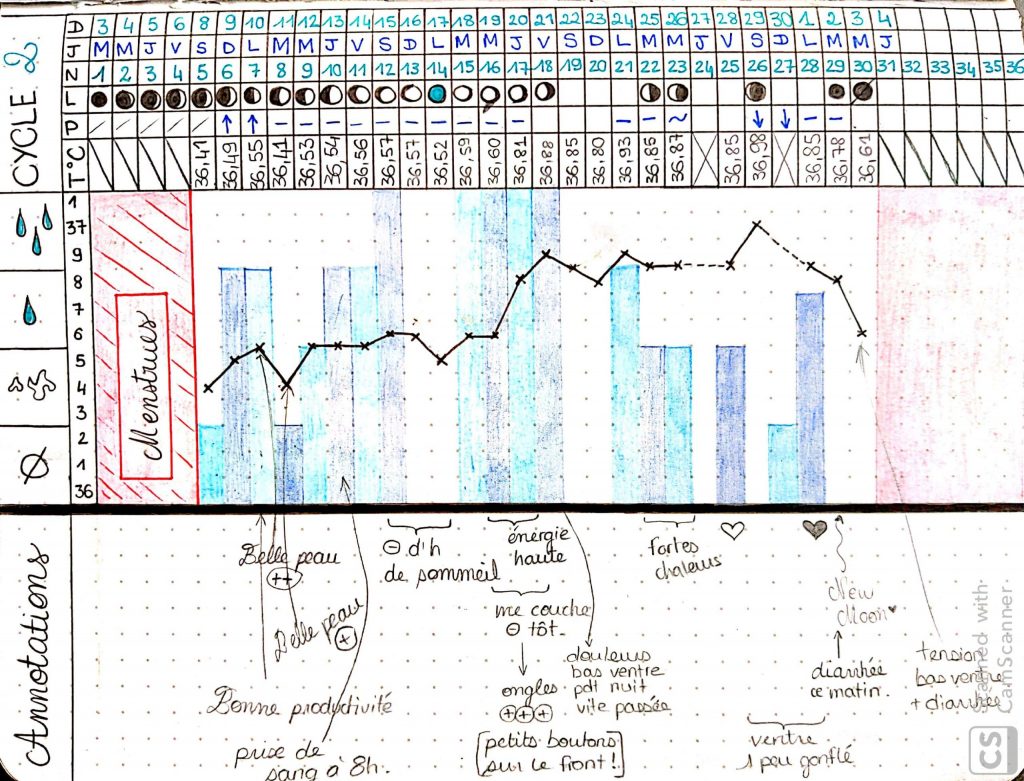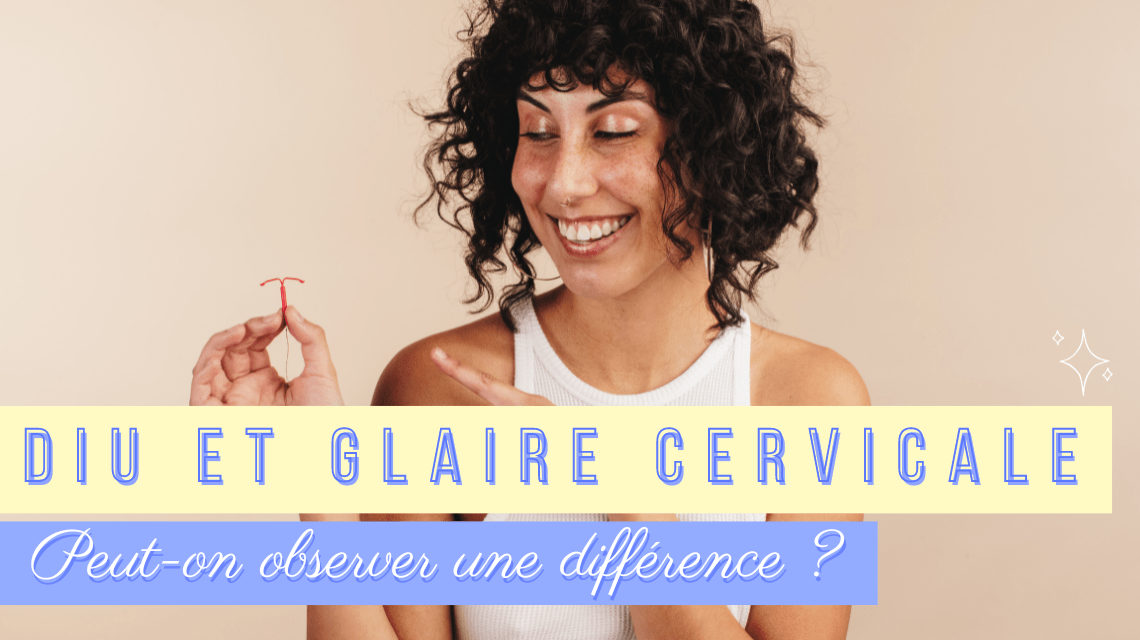Post-pill symptoms, rebound effect, side effects, etc. When you start asking questions about stopping taking the pill, it can be scary. You don't want to stop taking the pill (or any other hormonal contraception)? Good news, in this article we're going to give you the main keys to help you!
I've stopped taking the pill, or I'm going to stop because I've finished my pack: what can I do in practical terms? The main steps that follow involve adapting/adjusting your lifestyle.
What side effects can I expect?
Keep in mind that the symptoms that may appear when you stop taking synthetic hormones (acne, menstrual pain, irritability, absence of periods...) are really your body's way of showing you that it needs help! The body doesn't speak in words, it speaks in pain. So, let's face it, it's not very pleasant. We're going to try and guide you through this transition, so that you can understand how to make it as smooth as possible.
Adopt a balanced diet
Over the course of our lives, our body's needs constantly evolve, depending on our age, our daily activities and so on. Stopping taking the pill is a key moment when the body needsto regain its equilibrium as quickly as possible!
The advice we're going to give you here isn't complicated. Rather, they are part of the "common sense" we can use to feed ourselves.
- Make sure you eat enough: when you stop taking the pill, your body will need considerable resources to regain its equilibrium. In particular, solid resources to help restore hormonal balance. In such cases, it's important to make sure you eat enough, in a varied and structured way (proteins, carbohydrates and lipids) to provide all the elements your body needs on a daily basis. Don't be afraid to eat!
- Increase your protein intake. These macronutrients play a major role in many processes, particularly hormonal balance: meat, fish, milk, eggs and so on. The Anses recommends 0.83g of protein per kilo per day for a healthy adult.
- It is advisable to limit your consumption of meats other than poultry and cold meats;
- Eat more legumes (beans, lentils, chickpeas...), less refined cereal products (wholegrain or semi-complete breads, pasta and rice...), vegetables and vegetable oils (rapeseed, walnut and olive);
- Avoid sugary drinks.
Replenish these nutrient reserves
Hormones play an essential role in maintaining our well-being and health, as they influence all our other organs. Hormones interact directly with the nervous system, digestive system, endocrine system and immune system. When we stop taking the pill, it's particularly interesting to look at the balance of our hormones. It's your overall lifestyle that will help. However, three minerals are essential to thebalance of your hormones:
- Calcium
- Iodine
- Selenium
In addition to these, other nutrients may be deficient as a result of taking the pill for several years. They include :
- Zinc
- Magnesium
- B12
These elements can be found in food. In fact, that's where you'll draw them from first. However, if you want and need it, Nutripure's Multivitamin dietary supplement may be of interest. You'll find high-quality, easily-assimilable iodine, selenium, zinc and magnesium.

Protecting and strengthening your digestive system
Your intestines are a world unto themselves. The order is well established and each protagonist has a well-defined role! The major roles are :
- Filtering/selecting essential nutrients from our food into the bloodstream
- Eliminate elements that have no business being in our bodies, and which must not pass through the barrier into the circulation (waste products, toxins, synthetic hormone residues, etc.).
You have to imagine that your intestines, and especially your intestinal wall, are a bit like customs: everyone stops at the border to be checked! However, with our lifestyle, our diet and certain synthetic molecules (including the pill), our intestinal mucosa can become increasingly fragile. Customs is understaffed and the control system is becoming increasingly random, especially if nothing is done. The result? Certain undesirable synthetic molecules find their way into our bloodstream, weakening our mucous membranes and creating inflammation.
The aim will therefore be to protect and strengthen the customs workforce to remedy this weakening and avoid making it worse.

Step 1: Nutrition
Stem the problem at its root, i.e. via the diet. Everything starts with food, and a structured , varied diet in the right quantities is essential for maintaining good intestinal health. The poorer your food sources (restrictions of all kinds, elimination of certain food categories, etc.), the less your digestive system will be exposed to a variety of different/complementary elements, and the more it will tend to become sensitized.
Step 2: intestinal health
Your intestinal flora is made up of :
- the good bacteria that form part of the endogenous flora (those that reside there full-time), which are there to defend the area,
- and bad bacteria that make a mess (fermentation, then gas, then bloating).
It's important tomaintain the health of good bacteria by giving them the right "food". These are known as prebiotics (artichokes, garlic, dandelion, asparagus, parsnips, sweet potatoes, leeks...).
Probiotics can also be added to the diet. In other words, good bacteria to reinforce existing ones! These include fermented foods (yoghurts and fermented milks, kefir, kombucha, sourdough bread, raw sauerkraut, etc.).
Once again, and you know our position on this subject, we prefer to act first by adapting your diet rather than telling you to take dietary supplements(probiotics) right away! First and foremost, food is the means by which we supply our bodies with the essential elements they need.
Is fasting or monodiete worthwhile?
One of the main pieces of advice we gave you earlier was to make sure you eat enough. With fasting (whatever its practice) or monodiete (eating only one food in a meal), you will inevitably tend to restrict your calorie intake for the day. But the body, even at rest, has fundamental needs that can only be satisfied by food. So if you're trying to balance your hormonal system, it's best to make sure you eat enough! We therefore advise you against a young person's diet or a monodiet.
Identifying hormonal imbalance
Every woman is different and so is every post-pill syndrome. However, no single action will help you. It's a whole. Here, there are no false promises, no miracle products and no "stop the pill" marketing. There's no such thing as a magic bullet! Beware of what's on the market today!
So, if you have very intense post-pill symptoms, you'll need to see your doctor. This is to obtain a potential diagnosis or, at least, clues to an imbalance. This way, you can support your body as best you can.
Get your body moving
We're not here to give you a 10-line paragraph extolling the many benefits of regular physical activity. However, it's a reminder that never hurts.
TheWHO recommends several things for an adult aged 18 to 64 to be in good physical health:
- 2h30 to 5 hours of moderate-intensity activity or 1 to 2h30 of intensive sport per week;
- strength training 2 times a week;
- limit sedentary time, move more during the day if our work is static;
Observe your cycle
In our opinion, the best way to find out how your cycle is evolving is to observe it! It's something that can seem abstract when we stop taking the pill, because we've never learned how to track our cycle at all! At worst, the one thing we've always focused on is the arrival of the period. But a cycle is much more than that, especially a natural cycle!
Key steps to start observing your post-pill cycle (read the article)
Why observe your cycle?
- Take note and, little by little, understand and recognize what the different symptoms correspond to during the cycle.
- Monitor changes over the months (length of cycles, evolution of symptoms...)
- De-stress and live the transition more serenely! (understanding your cycle and its messages means adopting a different posture, no longer SUBJECTING but LIVING with your cycle).
What do we observe?
- Cycle time
- Any daily physical and psychological symptoms and sensations (breast pain, uterine tension, appearance of pimples at certain times, happy mood, heightened sensitivity, etc.).
- What are menstrual periods like? (pain, tightness, heavy flow...)
- And to tie it all together: the evolution of body temperature during the cycle, a hyper-valuable clue to better understand the key information above. All you need to know about temperature taking → the article you need!
How do you go about it?
- Dedicate a specific tool to cycle monitoring (smartphone application, notebook, bullet journal, graph, etc.).
- Try to take 2 minutes every day to note these different clues. At first it may seem difficult to stick to it. If you miss a few days, it doesn't matter. There may be days when you won't have anything to score either, and that's OK! If you find it difficult to do this on a daily basis, try to do it every 2-3 days. It's also a way to get into the habit of asking yourself, "How's my body doing today? "
Hm... OK, but it still seems abstract to me. An example?
Here's an example of a cycle observation graph. There's no contraception aspect behind it, just a way to visualize your cycle and understand the different changes during it.
This is a Maëlle cycle. Here, doing it in the form of a graph gives you a real overview, which is quite practical, but you can also do it in a more linear way in a diary, for example, or even in a circle - it's up to you! The main idea is to be able to look at it from the perspective of each item noted!

Here's an overview of the first key steps to take when stopping hormonal contraception, to optimize your transition, make it smoother and more pleasant, and take back the reins of your menstrual autonomy! All in all, a magnificent program!
Sources :






